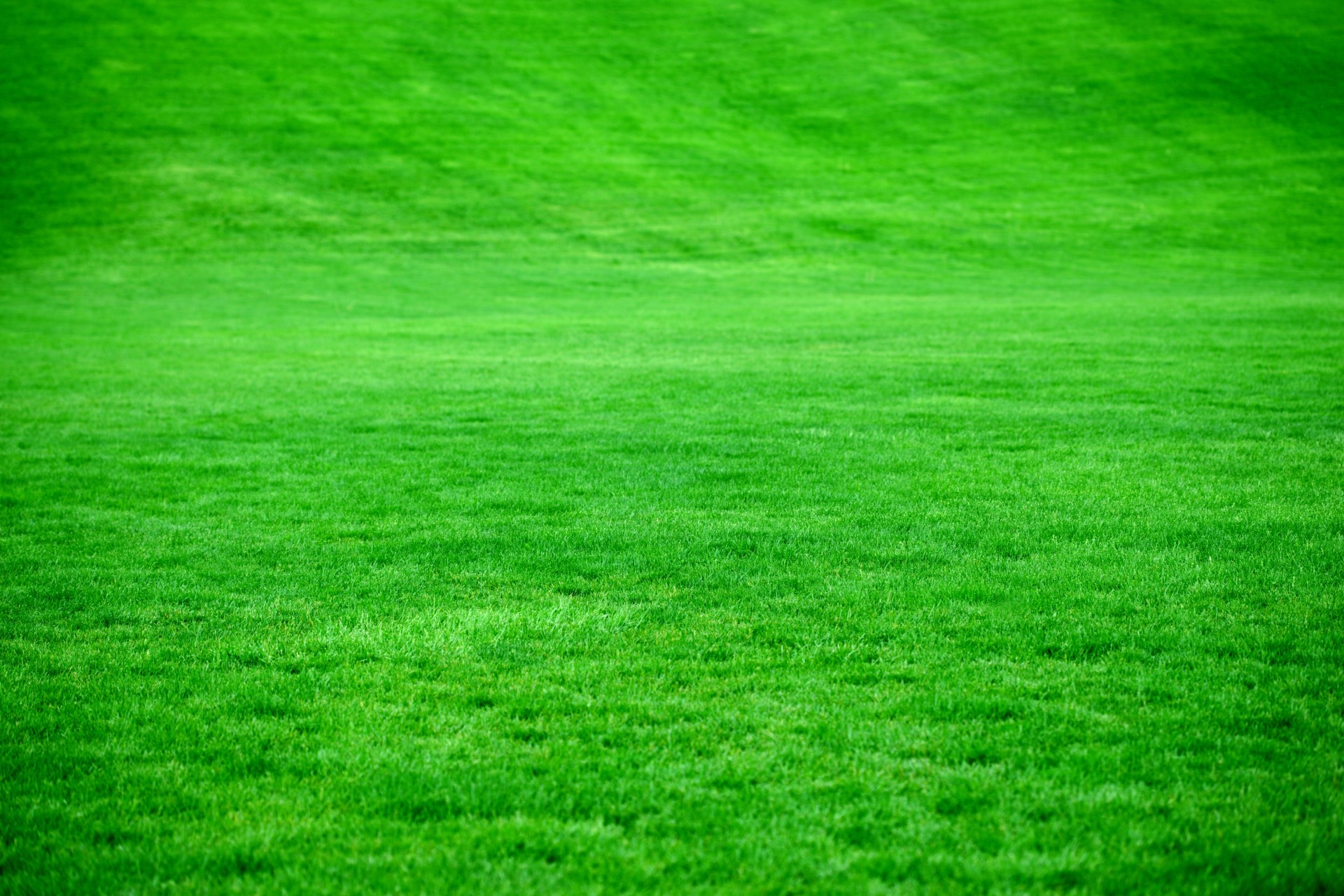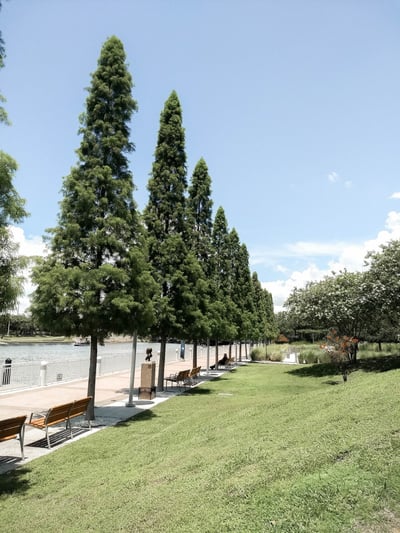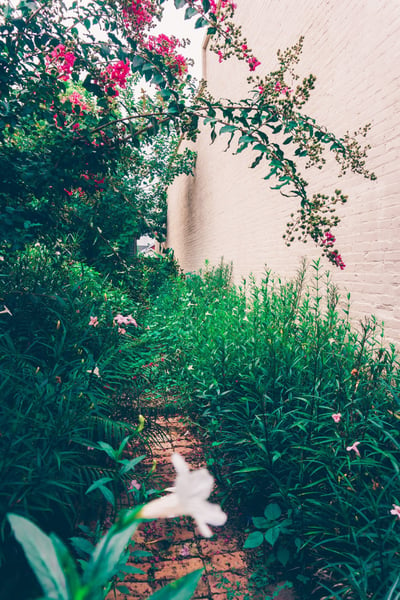
Modern landscaping relies heavily on turf and the inputs and activities needed to maintain it. Despite an automatic urge to denigrate those methods, the question that the environmentally conscious and sustainably-minded should be asking is this: Does traditional landscaping have a role in maintaining a healthy Earth? The answer is more complicated than you think.
Not much is simple these days, and nowhere is that truer than in landscaping.
On the one hand, environmentalists decry the use of fertilizers in lawn and grounds maintenance, citing eutrophication (the uncontrolled growth of plants and the death of wildlife) and pollinator die-off. They also point to poor stormwater management and urban monoculture, among other negatives. Each of these represents a clear and present danger to the environment.
On the other hand, more traditional landscapers and industry leaders point out that all plants, agnostic of type or origin, are better for the environment than the alternative of barren manmade surfaces like concrete and asphalt.
Unfortunately, disagreements and partisanship mean that various factions often have little to say to one another. Those who believe in traditional modern landscaping – well-shorn and bright green grass is the usual example – are irritated by those who insist that native gardening is the only way to ameliorate the many ills plaguing the planet. The opposite, of course, is just as true.
Andrew Bray, Vice President of Government Relations at the National Association of Landscape Professionals, doesn’t like that state of affairs. In this charged era, he calls for a bit more open-mindedness when it comes to landscaping and the environment.
We recently caught up with him to get his take on human health, stormwater management, the urban heat island effect, green infrastructure – and perhaps most importantly, the role of turf in all of the above.
Turfgrass and the Environment: What’s the Deal?

In advocating a more measured approach, Bray starts by pointing out that some of the most stereotypically “bad” aspects of the landscaping industry actually possess significant benefits. Take pesticides, for example.
As a lobbyist, Bray says, “Many perceive pesticides as purely a bad thing, and we fight that issue in state capitals across the country. I couldn't disagree more with that idea, especially if you think about how pesticides help you in your personal life, help your lawn to get rid of ticks, to grow grass more, to protect trees and shrubs around your house from invasive plants.”
While there are non-pesticide ways to get rid of ticks (luring birds and predatory insects to your garden, for instance), the point is well-taken: Sometimes, pesticides truly are a good answer. For instance, new research shows that an often-bashed chemical used in landscaping applications, glyphosate, may be absolutely critical to restoring wild areas – and safe for humans, to boot.
Bray points out that grass is a good stormwater management tool as well: “If you have healthy turf, you’re going to have much less runoff.” Studies indicate that maintained lawns do soak up runoff, but become more adept at doing so if they receive appropriate amendments, which not all do.
Other studies show that grass can trap dust and prevent erosion, even in very arid places such as the Judean Desert. And according to Bray, it can measurably improve air quality and produce oxygen, although some sources indicate that in the end the gross amount of oxygen is offset by a significant amount of carbon released when grass dies and breaks down.
Also, vegetation provides significant cooling benefits for cities, including turfgrass, which can help mitigating the damaging and sometimes deadly urban heat island effect.
Natural Landscapes and Mental Health: A Clear Win
 That turf is the best answer in the residential garden is, of course, up for debate. What is less up for debate is that “natural” landscapes (even the highly managed ones such as lawns and parks) are beneficial to humans. Countless studies show that green space improves mental health, helping people escape the psychological grind of urban spaces and “escape,” right in their own yards.
That turf is the best answer in the residential garden is, of course, up for debate. What is less up for debate is that “natural” landscapes (even the highly managed ones such as lawns and parks) are beneficial to humans. Countless studies show that green space improves mental health, helping people escape the psychological grind of urban spaces and “escape,” right in their own yards.
“Global urbanisation has reduced access to and engagement with greenspace, but there is good evidence of a positive relationship between levels of neighbourhood greenspace and mental health and well-being,” explains the study. “Individuals have less mental distress, less anxiety and depression, greater wellbeing and healthier cortisol profiles when living in urban areas with more greenspace compared with less greenspace. Large differences in disease prevalence are reported when comparing residents of very green and less green settings, even after controlling for socioeconomic status.”
So the question is not whether turf is beneficial at all; it’s whether it could be more so.
How Can We Make Landscapes Healthier and More Environmental?
The downside of turf is that many lawns are not appropriately maintained by homeowners, develop thick levels of thatch, and in some cases can become nearly as impervious as hard surfaces. And maintaining lawns that soak up stormwater typically means applying lots of water and artificial inputs, which may not always be the best choice.
Bray does not claim turf is the ideal choice in all situations. He is perfectly able to imagine a world where there are better answers to issues such as stormwater, air quality and urban heat.
“I would welcome to see what those better ways are, and in certain situations, that might be the case,” Bray says. “It’s so situationally based. My biggest response is not to automatically assume that turf is bad.”
David Yocca, Senior Landscape Architect and Ecological Planner for Biohabitats, recommends reconsidering the type of grass one uses in any environment. Turfgrass, he says, is not sinking carbon, so it’s not “doing the same ecosystem services that a naturalized landscape would have.” Instead, “You can move in that direction with a turfgrass or meadow if it is allowed to have more diversity, if you’re not using artificial chemicals and if you’re composting the dead material. It’s a wide range, and it depends a lot on how it’s done.”
Are Lawns Better Than Nothing?
 So, the question becomes, are lawns better than nothing?
So, the question becomes, are lawns better than nothing?
And the answer is a clear yes, assuming “nothing” to mean the impermeable surfaces that blanket most cities and much of suburban America. However, we would strongly encourage anyone who is considering a lawn to take small steps in the direction of a more natural habitat. That might mean:
- Allowing grass to grow taller and flower
- Varying the types of grass you use
- Avoiding pesticides where possible
- Using compost for nutrition rather than fertilizer
What can you do in your own backyard?
“It’s situational and regional, and it is certainly not a one-size-fits-all approach from our perspective,” says Bray. “We want that lawn to be operating at its best capacity to do those things I was talking about earlier.” If you want to find the best scenario that balances your idea of aesthetics with what can grow in your area and environmental benefits, he says, talk to an agronomist or scientist.
If you’re considering removing hardscape and putting in a natural habitat, check out this site to learn more about landscapes and get in touch with Ecogardens to learn about sustainable solutions.
For those in the landscaping industry, consider educating customers on other options besides lawns, offering natural pesticides, explaining the benefits of other landscapes. That way, we can work toward the middle when it comes to that balance for the customer.
And lastly, while partisanship is understandable when it comes to charged issues such as the environment, it’s critical to prioritize understanding. “There are always going to be challenges,” Bray says, “we strive to work through those challenges with the underlying theme that the landscape industry is here to protect the environment.”
